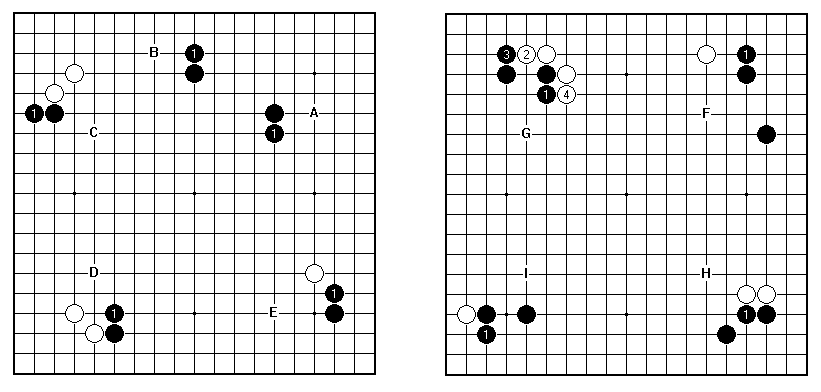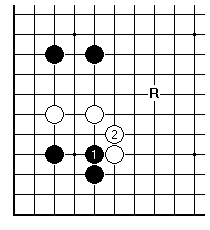When I was an active print journalist I went to very many
press conferences. I was amused but perplexed at how often colleagues from the broadcasting media would try to get the event re-labelled as a
news conference. There we were, queuing up to ask Thatcher or Gorbie a question, and some guys were bouncing up and down instead about such a trivial issue.
I thought of that with a start this week when reading thorugh some old Kidos. As ever, T Mark is beavering away transcribing games, and one current batch is games from the 1950s (two new Kitani games for the GoGoD database due for a new issue next month!). I do the easy bit of topping and tailing them with the the tournament details etc. As I go through the magazines I also get the tasty end of the lollipop by being able to browse through the non-game pages. One feature that caught my eye was a long series on terms - not so much what they mean but why they exist. I had always known that the early 20th century saw an explosion in go terms as part of the popularisation of the game, along with the surge in books. Most stuck, though many terms you now know would have left Shusaku looking blank.
What I had not not appreciated before though, being a scribe with inky fingers rather than a man with a mike, was that many terms developed, and developed the way they did, because of the need to describe games on the radio. Word pictures were needed. Loving, as I do, listening to cricket on Test Match Special or to the likes of Vin Scully on baseball radio, I felt entranced enough by this new insight to do two things.
One was to present the little quiz below. This is to do with a move where you add a stone next to one of the same colour in a straight line. Many people call this nobi. Occasionally they are right. More often it's something else. You will see the vast range of possibilities as you work through the answers. I wouldn't expect many people to get more than a few, but that's not really the point. I just want to share a little bit of unsual go history which may possibly change your thinking about the value of go terms.
Incidentally, when magnetic go boards first came out, one of their big selling points was that they were ideal for listening to games on the radio (a game could be spread over several broadcasts, so being able to store the position was a boon). The same facility applied to newspaper games, of course, but the 1930s had their equivalent of iPadders and radio was the thing was that was going to change the way go was played for ever...
The task in the quiz is simply to give the Japanese name for all numbered moves shown. There is not always 100% agreement among pros, but these were deemed near enough universal by go writer Mihori Sho. Mihori's terms are given in the Show/Hide portion.
The other thing I did was to write a piece for the GoGoD Concepts Library on the life and death (and reincarnation) of one of those many go terms that were commonly labelled "used by professionals" and considered too hard for the average amateur. Amashi is one such. This new one, deep valleys, is another, but far less useful. However, I don't believe that everything in go has to be utilitarian, and I offer it mainly as an entertaining look at one of the bywaters of the game. Radio days are here again!
The link is:
http://www.gogod.co.uk/Concepts/Concepts.htm, then scroll down to Deep Valleys.
The summer 2011 GoGoD CD will have several more of the quizzes shown below, for other types of move.
Attachment:
 Nobi1and2.png [ 6.35 KiB | Viewed 9746 times ]
Nobi1and2.png [ 6.35 KiB | Viewed 9746 times ]
Attachment:
 Nobi3and4.png [ 7.21 KiB | Viewed 9746 times ]
Nobi3and4.png [ 7.21 KiB | Viewed 9746 times ]
Attachment:
 Nobi5.png [ 1.65 KiB | Viewed 9746 times ]
Nobi5.png [ 1.65 KiB | Viewed 9746 times ]



